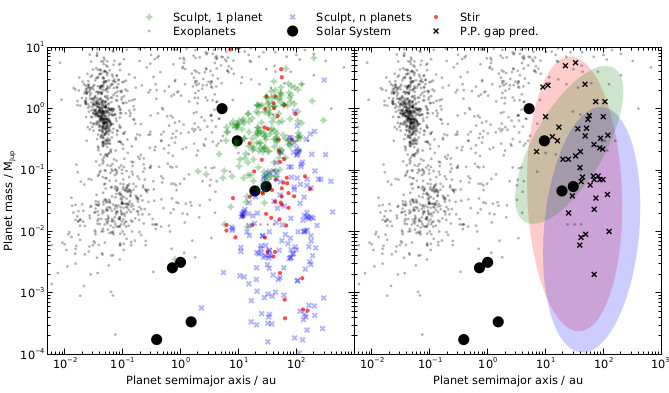|
Debris discs can be used to probe the outer reaches of planetary systems,
where other planet-detection methods struggle. We use debris discs to infer
planet properties in a large number of systems, showing that these planets
are very similar to those inferred to be forming in protoplanetary discs,
and that many planets thought to be interacting with debris discs should be
detectable with JWST. The figure shows planets we predict from debris discs,
compared to both known planets and those thought to be forming in protoplanetary
discs. Small black circles are known exoplanets, and large circles are Solar
System planets.
Left plot: green diamonds and blue crosses show planets needed
to sculpt debris discs if sculpting is performed by one or multiple planets,
respectively. Red circles are planets required to stir debris discs.
Right plot: black crosses show planets inferred to be forming in protoplanetary
discs (Lodato et al. 2019), and coloured ovals denote planets we infer from debris.
These two populations match each other, possibly implying that young planets
do not migrate inwards as far as previously thought, but rather remain in
situ to interact with debris at later times.
|

